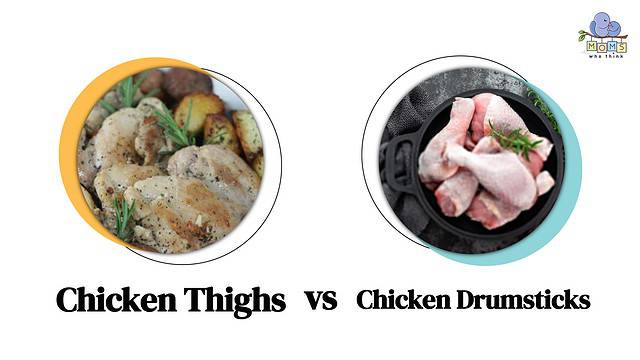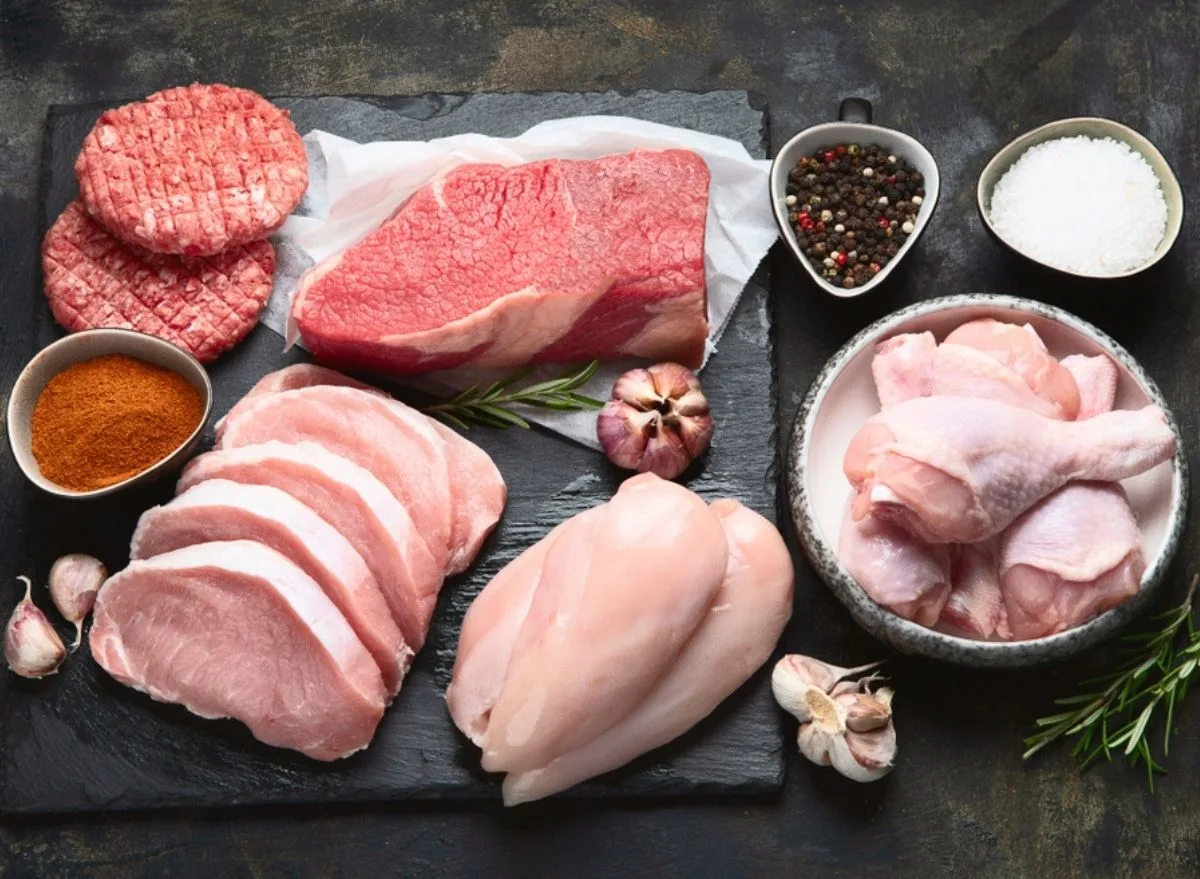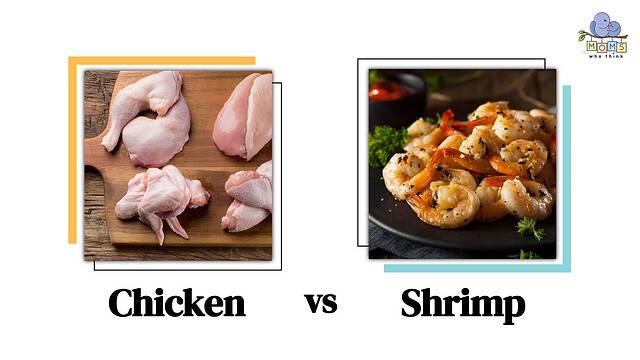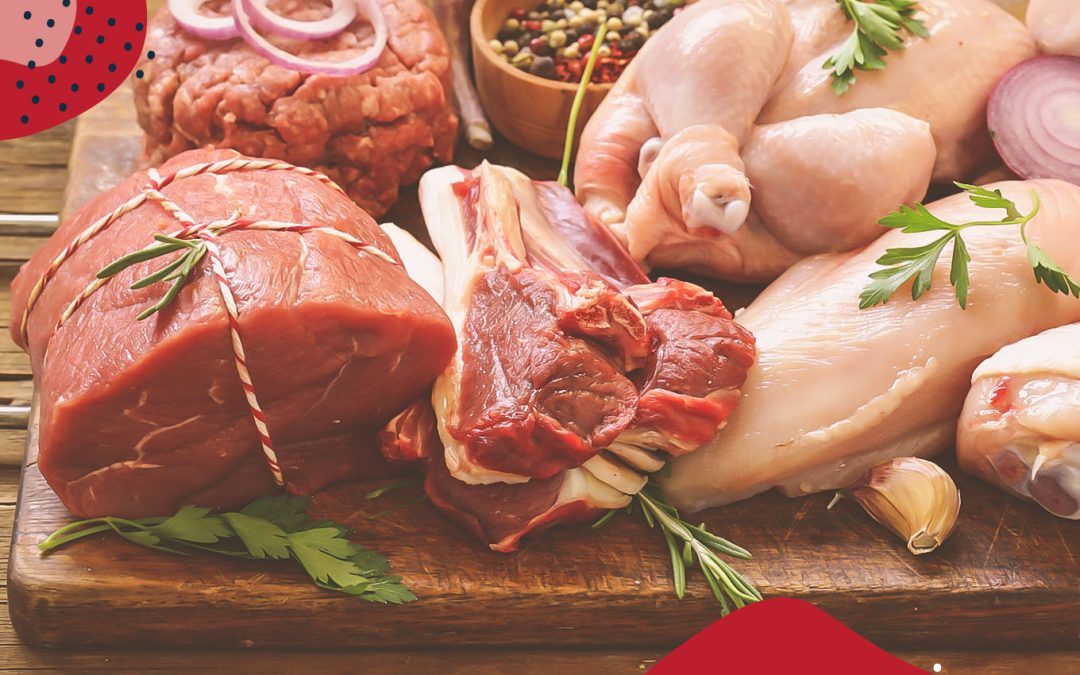Introduction

Chicken and lamb are two popular choices when it comes to meat consumption. Both have their distinct flavors, nutritional benefits, and versatile cooking options. This article will explore the qualities that make chicken and lamb preferred meats, their nutritional values, and cooking tips for each. It will also delve into a comparison of taste, texture, cost, and availability between chicken and lamb. Additionally, the article will discuss the health considerations associated with these meats, particularly regarding cholesterol and fat content, as well as their impact on heart health and weight management. Finally, it will offer guidance on choosing between chicken and lamb based on dietary preferences, and provide some common recipes for both. Whether you favor the lean protein of chicken or the flavorful option of lamb, this article will help you make an informed choice for your next meal.
What Makes Chicken And Lamb Popular Choices For Meat?
Chicken and lamb have become popular choices for meat due to several factors. Firstly, they offer versatility in cooking, allowing for a wide range of delicious recipes. Secondly, both meats are rich in protein, making them a nutritious option for those looking to meet their dietary protein needs. Moreover, chicken and lamb are readily available in various cuts, catering to different culinary preferences. Lastly, these meats have distinct flavors that can enhance the taste of dishes, providing unique dining experiences. With their versatility, nutritional benefits, and satisfying taste profiles, it’s no wonder that chicken and lamb remain popular choices for meat consumption.
Health Benefits Of Chicken And Lamb
Chicken and lamb offer numerous health benefits. Both meats are excellent sources of high-quality protein, necessary for muscle development and repair. Chicken is leaner and lower in saturated fats, making it a healthier option for individuals concerned about heart health and weight management. It is also rich in essential vitamins like B3, B5, and B6, which support energy metabolism and promote proper nerve function. Lamb, on the other hand, provides important minerals such as selenium, zinc, iron, and phosphorus, which are vital for immune function, brain health, and red blood cell production. Including chicken and lamb in your diet can contribute to a well-rounded nutrient intake and support overall health and well-being.
Chicken: The Lean Protein

Chicken is widely recognized as a lean source of protein. It is a popular choice among individuals looking to maintain a healthy weight and build muscle. With lower levels of saturated fats compared to other meats, chicken offers a nutritious option for those concerned about heart health. Additionally, chicken breast is particularly lean, making it a preferred choice for individuals following a low-fat diet. Its high protein content supports muscle development and repair, making it an essential food for athletes and fitness enthusiasts. Incorporating chicken into your diet can provide a healthy dose of lean protein without compromising on taste or versatility.
Nutritional Value Of Chicken
Chicken is a powerhouse of nutrients, making it a popular choice among health-conscious individuals. It is packed with high-quality protein, essential for muscle development and repair. A 100-gram serving of chicken breast provides about 31 grams of protein. Chicken is also low in fat, particularly if you opt for skinless cuts. It contains important vitamins and minerals like B vitamins (niacin and vitamin B6), phosphorus, and selenium. Additionally, it is a good source of amino acids, such as tryptophan and tyrosine, which are crucial for brain function and mood regulation. Whether you’re looking to lose weight or build muscle, chicken is a nutritious option that provides the necessary fuel for your body.
Cooking Tips And Versatility Of Chicken
Chicken is incredibly versatile and can be prepared in a variety of ways to suit different tastes and dietary preferences. Here are some cooking tips to make the most out of chicken:
- Grilling: Marinate chicken breasts or skewered chicken pieces before grilling for added flavor and tenderness.
- Baking: Season chicken pieces with herbs and spices, then bake in the oven for a healthy and easy meal.
- Stir-Frying: Cut chicken into thin strips and stir-fry with vegetables for a quick and nutritious stir-fry dish.
- Roasting: Whole chicken can be roasted with a variety of seasonings to create a flavorful and juicy roast.
- Boiling: Boil chicken to make a flavorful broth for soups and stews.
No matter how you choose to cook it, chicken is an excellent protein source that can be enjoyed in many different ways.
Lamb: The Flavorful Option

Lamb is known for its bold and distinctive flavor, making it a flavorful option for meat lovers. Its rich taste is often described as slightly gamey, which sets it apart from other meats. Lamb can be cooked in various ways to enhance its unique flavor, such as grilling, roasting, or braising. The fat marbling in lamb also adds to its succulence and richness. It is a popular choice for dishes like lamb chops, rack of lamb, or leg of lamb. With its robust flavor profile, lamb brings a special touch to any meal.
Nutritional Value Of Lamb
Lamb is a nutrient-dense meat that provides a range of essential nutrients. It is a good source of high-quality protein, which is necessary for muscle growth and repair. Lamb is also rich in vitamins and minerals, including iron, zinc, vitamin B12, and selenium. These nutrients play important roles in energy production, immune function, and overall health. Additionally, lamb is known for its omega-3 fatty acid content, which can aid in reducing inflammation and promoting heart health. However, it is important to note that lamb also contains saturated fat, so moderation is key when incorporating it into a balanced diet.
Different Cuts And Cooking Methods For Lamb
Lamb offers a variety of cuts that can be cooked in different ways to suit various culinary preferences. Some popular cuts of lamb include leg, shoulder, loin chops, rack of lamb, and shank. Each cut has its unique flavors and textures.
For example, the leg of lamb is often roasted to perfection, while shoulder cuts are commonly used for slow cooking methods such as braising or stewing. Loin chops are best suited for grilling or pan-searing, and rack of lamb can be roasted or grilled for an elegant presentation. Shank cuts are ideal for long, slow cooking methods like braising or making hearty soups.
By choosing the right cut of lamb and employing the appropriate cooking method, you can unlock the full potential of this flavorful meat and create a delicious meal for your family and friends.
Comparison Of Chicken And Lamb

When it comes to comparing chicken and lamb, there are a few key factors to consider. Taste and texture-wise, chicken is often described as milder and more versatile, while lamb has a distinct, rich flavor. In terms of cost and availability, chicken tends to be more afford
Difference In Taste And Texture
When it comes to taste and texture, chicken and lamb offer distinct experiences. Chicken is known for its mild and neutral flavor, making it a versatile choice for various recipes. It has a tender and juicy texture, making it easy to cook and enjoy. On the other hand, lamb has a unique and rich flavor, with a slightly gamey taste. It has a firmer texture, which adds a satisfying chewiness to dishes. Whether you prefer the subtle taste and tenderness of chicken or the bold flavor and texture of lamb, both meats offer their own unique culinary experience.
Cost And Availability Of Chicken And Lamb
When it comes to cost and availability, chicken is generally more affordable and widely accessible compared to lamb. Due to its popularity and high production volume, chicken is often priced competitively and readily available in most grocery stores. On the other hand, lamb tends to be more expensive and may not be as commonly found in supermarkets. It is often considered a specialty or premium meat, making it less accessible and potentially more costly. However, the availability and cost of both meats may vary depending on factors such as location and season.
Health Considerations

When it comes to health considerations, there are a few key factors to keep in mind when choosing between chicken and lamb. Both meats are excellent sources of protein, but there are differences in terms of cholesterol and fat content. Chicken generally has lower levels of saturated fat compared to lamb, making it a healthier option for those watching their cholesterol levels. Additionally, chicken is often recommended for individuals looking to manage their weight or improve heart health due to its lean nature. However, it’s important to remember that moderation and balanced nutrition are key for overall wellbeing.
Cholesterol And Fat Content In Chicken And Lamb
When comparing the cholesterol and fat content in chicken and lamb, there are notable differences. Chicken tends to have lower levels of saturated fat compared to lamb, making it a healthier choice for those concerned about their cholesterol levels. A 100g serving of lamb sirloin contains 9g of fat, while the same amount of chicken breast has only 3.6g of fat. Additionally, lamb contains 3g of saturated fat, whereas chicken breast has just 1g. By opting for chicken over lamb, individuals can reduce their intake of saturated fats and manage their cholesterol levels more effectively.
Impact On Heart Health And Weight Management
Eating chicken instead of lamb can have a positive impact on heart health and weight management. Chicken is leaner and has lower levels of saturated fat compared to lamb. By choosing chicken over lamb, individuals can reduce their intake of saturated fats, which can contribute to increased cholesterol levels and a higher risk of heart disease. Additionally, chicken is a great source of lean protein, which can help in weight management by promoting feelings of fullness and aiding in muscle development. Incorporating chicken into a balanced diet can support both heart health and weight management goals.
Conclusion

In conclusion, when it comes to choosing between chicken and lamb, both options have their own unique qualities. Chicken offers a lean source of protein with lower levels of saturated fat, making it a healthier choice for heart health and weight management. On the other hand, lamb provides a flavorful alternative with its own set of nutritional benefits. Ultimately, the decision between chicken and lamb comes down to personal preference and dietary goals. By incorporating either option into a balanced diet, individuals can enjoy the benefits of a delicious and nutritious protein source.
Choosing Between Chicken And Lamb Based On Dietary Preferences
When it comes to choosing between chicken and lamb, it ultimately depends on your dietary preferences. If you’re looking for a lean protein source with lower levels of saturated fat, chicken would be the ideal choice. On the other hand, if you prefer a flavorful option with a slightly gamey taste, lamb would be more suitable. Consider your personal taste preferences, nutritional goals, and any dietary restrictions you may have. Incorporating either chicken or lamb into a balanced diet can provide a delicious and nutritious protein source.
Common Recipes For Chicken And Lamb
Common recipes for chicken include grilled chicken breast, chicken stir-fry, chicken curry, and chicken parmesan. These dishes highlight the versatility of chicken and its ability to absorb different flavors and spices. For lamb, popular recipes include lamb chops, lamb stew, roasted leg of lamb, and lamb kebabs. These recipes often showcase the rich and savory flavor of lamb, enhanced by various marinades and seasonings. Whether you prefer the tender and mild taste of chicken or the bold and distinct flavor of lamb, there are countless recipes available to satisfy your culinary cravings.
FAQ: Chicken vs Lamb
1. Which meat option is healthier, chicken or lamb?
Both chicken and lamb can be healthy meat choices, but they differ in their nutritional profiles. Chicken is typically lower in calories and saturated fat, making it a leaner option. On the other hand, lamb contains more calories and higher levels of saturated fat. However, lamb also provides more essential nutrients, such as iron and vitamin B12. Ultimately, it comes down to personal preference and dietary requirements.
2. Is one meat option more flavorful than the other?
Chicken and lamb have distinct flavors. Chicken meat is mild and versatile, allowing it to absorb flavors from spices, marinades, and sauces easily. Therefore, it can take on a wide variety of tastes based on the seasonings used. Lamb, on the other hand, has a stronger and more distinct flavor that is often described as rich and earthy. It is particularly popular in Mediterranean and Middle Eastern cuisine.
3. Which meat option is more tender?
Chicken is known for its tenderness, especially when cooked properly. The meat is generally softer and easier to chew compared to lamb. However, lamb can also be tender if it is cooked using appropriate methods such as slow-cooking or braising. It is important to note that cooking methods and cuts of meat play a significant role in determining tenderness.
4. Are there any cultural or religious factors to consider?
In certain cultures or religions, there may be specific dietary restrictions or preferences related to chicken or lamb. For example, in Islamic dietary laws, known as Halal, lamb is often preferred over chicken. Additionally, in Hinduism, some individuals may choose not to consume beef or lamb due to religious beliefs. It is always important to consider these factors when preparing meals for specific individuals or occasions.
5. Can both chicken and lamb be prepared using similar cooking methods?
Yes, both chicken and lamb can be cooked using a wide range of methods, including grilling, roasting, stir-frying, and baking. However, it is crucial to consider the different cooking times required for each type of meat. Chicken typically cooks faster than lamb due to its lower fat content. Adjusting cooking times accordingly is important to ensure that both meats are cooked thoroughly and safely.
6. Which meat option is more cost-effective?
Generally, chicken tends to be more cost-effective compared to lamb. The cost of lamb is influenced by various factors such as breed, cut, and availability. Chicken, being more readily available and having a shorter production cycle, is usually more affordable. However, prices may vary based on geographic location and quality of the meat.
7. Can both chicken and lamb be suitable for various dishes?
Absolutely! Both chicken and lamb are versatile meats that can be used in a variety of dishes. Chicken is commonly used in salads, sandwiches, stir-fries, curries, and grilled dishes. Lamb is featured in a wide array of dishes, including stews, roasts, kebabs, and traditional lamb curries. The choice between the two depends on personal taste preferences and the culinary tradition being followed.
Conclusion:
When it comes to choosing between chicken and lamb, there are several factors to consider, such as nutritional content, flavor, tenderness, cultural factors, cooking methods, cost, and suitable dishes. Both meats can be enjoyed as part of a balanced diet, and the final decision should be based on individual preferences and dietary needs. Experimenting with different recipes and flavors can help you discover the joy of cooking and eating both chicken and lamb.

Kemah Cafe is a family-owned eatery that takes pride in offering a delightful array of Vietnamese, Chinese, and Thai dishes. Located at the heart of the community, Kemah Cafe has been serving up delicious Pho and other authentic Asian cuisine for many years. Founded with a passion for sharing the flavors of the East, Kemah Cafe has become a beloved culinary destination for locals and visitors alike. The warm and welcoming atmosphere of the cafe, combined with the tantalizing aromas of freshly prepared dishes, creates an unforgettable dining experience.